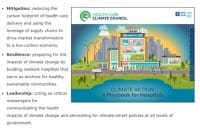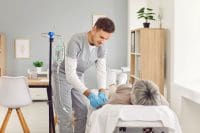As a nurse, it’s hard to hear news reports about children younger than 5 years old in hospital emergency departments (EDs) with gunshot wounds. How do we stop unintentional gun-related shootings involving children?
In August 2021, CBS News reported new data released by the advocacy group, Everytown for Gun Safety, that indicates deadly unintentional shootings by children rose 31% between March and December 2020. The trend continues. Research points to the cause being a sudden increase in state gun sales and more kids at home because of COVID-19 lockdowns. According to the report by Donaghue, the facts show most unintentional shootings by children occur at a home. Each year, nearly 1,300 children younger than 18 years die from self-inflicted gunshot wounds. Many of those who live remain disabled (Fowler 2017). I can’t imagine being a pediatric ED nurse caring for a child with gunshot wound injuries. These sad stories have deeply touched my heart.
Firearm injuries have become a serious pediatric and public health problem because children having easy access to guns. Children under age 8 can’t distinguish between a real and toy gun. Kids are always searching around their homes, and they don’t understand that playing with guns can cause serious injury or death. The American Medical Association has spoken about gun violence being a public health problem and has asked for public health answers. The American Academy of Pediatrics states, “The safest home for a child is one without guns.” Children younger than 3 are strong enough to pull the trigger of many handguns. Children left at home alone are injured and die because of playing with guns or showing them to a friend.
Gun buyback incentives are no longer working. Using a public health approach and providing community awareness is needed to stop widespread pediatric gun-related injuries and deaths. Pediatricians, nurses, politicians, and community leaders must act now to find ways to prevent gunshot injuries. Children need safe, secure, healthy environments to grow and develop.
To reduce gun shootings, ask parents and families about firearm access in the home. Nurses can assist the National Shooting Sports Foundation (nssf.org) and Project ChildSafe (projectchildsafe.org) to work with communities to provide gun safety education. In addition to supporting gun safety by calling and writing letters to state representatives, I propose that Congress support funding Centers for Disease Control and Prevention gun violence prevention research. And maybe our government can gain support from the National Rifle Association in changing gun laws.
Joan Pittman, RN
References
Donaghue E. “Alarming” spike in deadly unintentional shootings by kids as gun sales soar during lockdowns. CBS News. May 8, 2020. cbsnews.com/news/unintentional-shootings-guns-kids-sales-coronavirus-lockdowns
Fowler KA, Dahlerg LL, Haileyesus T, Gutierrez C, Bacon S. childhood firearm injuries in the united states. Pediatrics. 2017;140(1):e20163486. doi: 10.1542/peds.2016-3486
Nelson R. Can healthcare professionals do anything about gun violence? Am J Nurs. 2017;117(5):18-9. doi: 10.1097/01.NAJ.0000516267.93967.e3


















